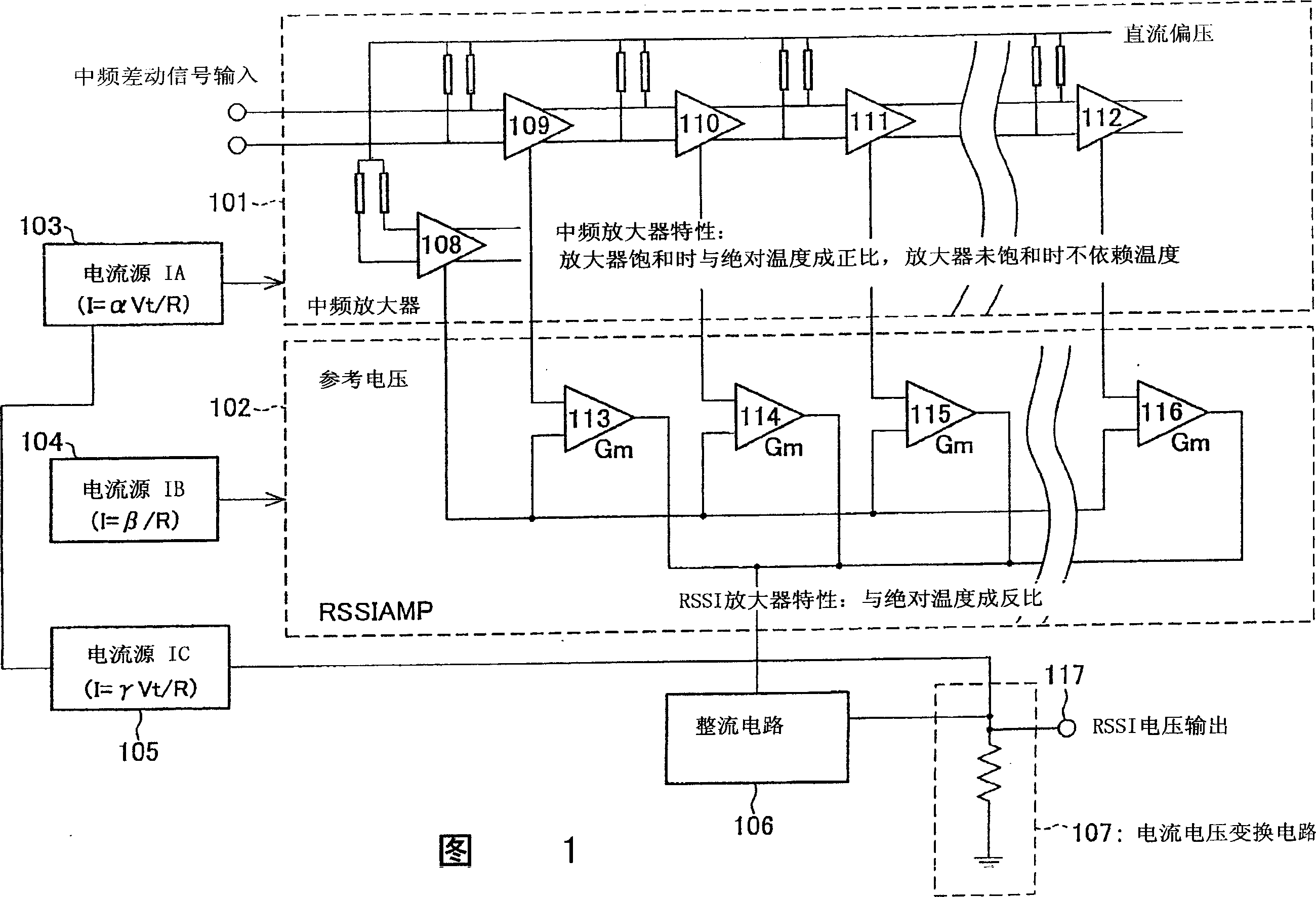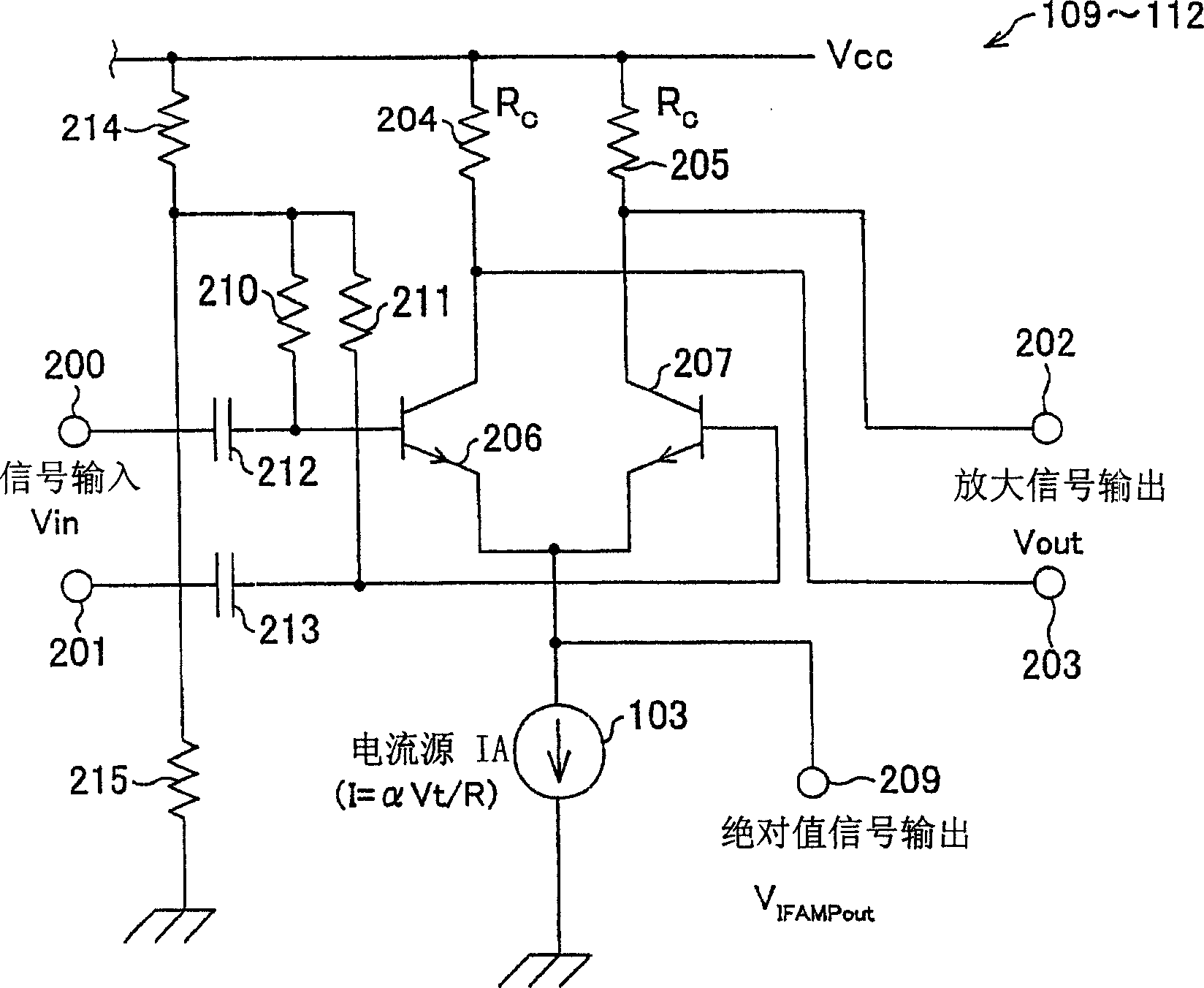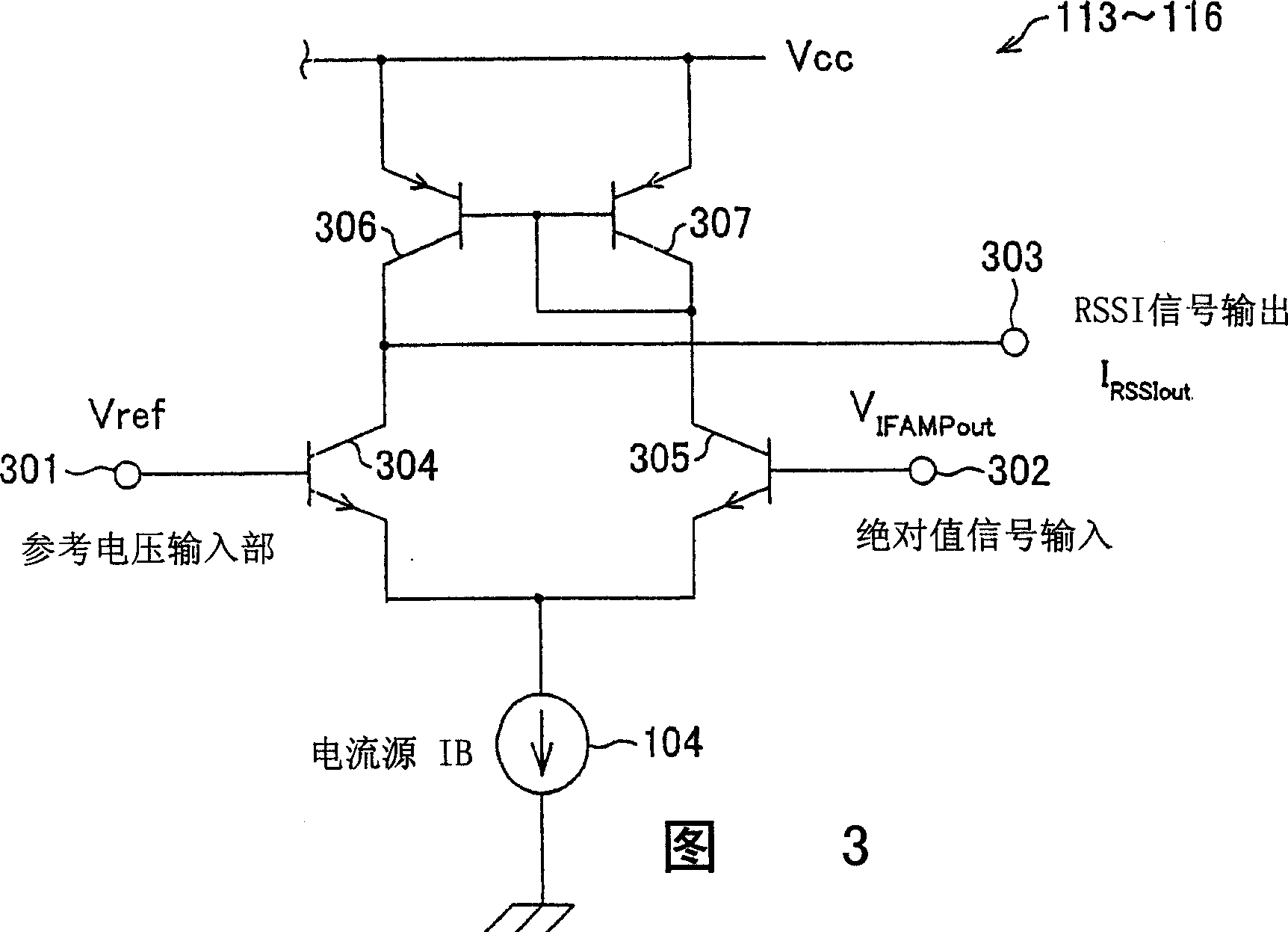Received signal strength measurement circuit, received signal strength detection circuit and wireless receiver
A technology for receiving signal strength and measuring circuits. It is applied to improve amplifiers to reduce temperature/power supply voltage changes, electrical components, and transmission systems. It can solve problems such as output characteristic dependence, error, and change, and achieve improved communication characteristics and improved reception. The effect of precision
- Summary
- Abstract
- Description
- Claims
- Application Information
AI Technical Summary
Problems solved by technology
Method used
Image
Examples
Embodiment approach 1
[0041]Hereinafter, embodiments of the present invention will be described in detail with reference to the drawings. FIG. 1 is an embodiment showing the outline of the RSSI circuit of the present invention. The RSSI circuit includes an intermediate frequency amplifier 101 , an RSSI amplifier (voltage-current conversion unit) 102 , a current source IA 103 , a current source IB 104 , a current source IC 105 , a rectifier circuit 106 , and a current-voltage conversion unit (voltage output unit) 107 .
[0042] An intermediate frequency amplifier is formed by cascading multi-stage amplifiers (differential amplifiers) 109-112. The stages of amplifiers 109 to 112 constituting the intermediate frequency amplifier amplify the input signal, and sequentially output the amplified output to the subsequent amplifier.
[0043] In addition to the function of amplification, the amplifiers 109-112 also have the function of respectively outputting absolute value signals whose magnitude is propor...
PUM
 Login to View More
Login to View More Abstract
Description
Claims
Application Information
 Login to View More
Login to View More - Generate Ideas
- Intellectual Property
- Life Sciences
- Materials
- Tech Scout
- Unparalleled Data Quality
- Higher Quality Content
- 60% Fewer Hallucinations
Browse by: Latest US Patents, China's latest patents, Technical Efficacy Thesaurus, Application Domain, Technology Topic, Popular Technical Reports.
© 2025 PatSnap. All rights reserved.Legal|Privacy policy|Modern Slavery Act Transparency Statement|Sitemap|About US| Contact US: help@patsnap.com



